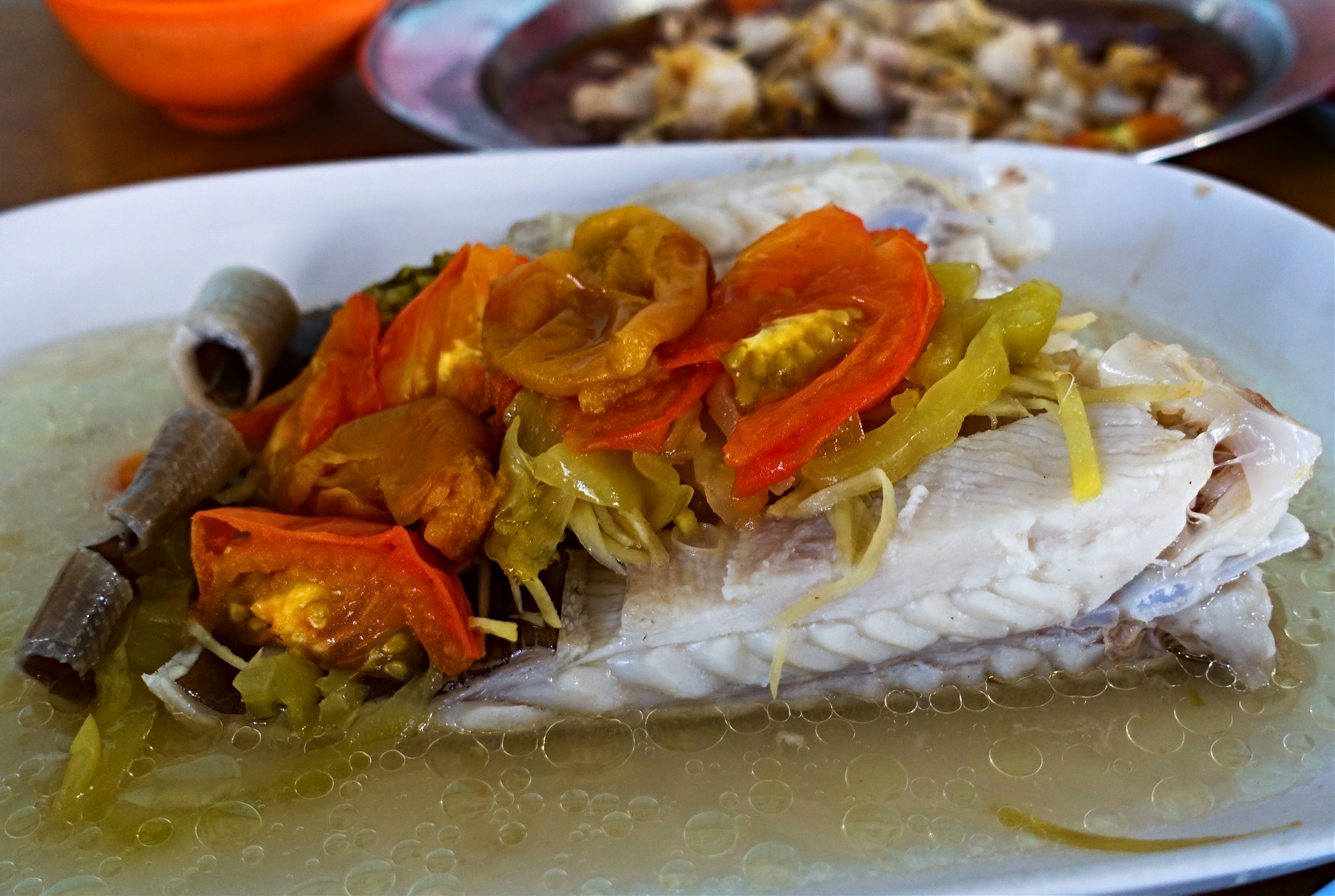More than 6 decades old, Yoong Kee Eating Shop is one of the oldest eateries in Bukit Mertajam, a small, languid town on Province Wellesley, across the Straits of Penang from George Town, and a mere 15 minutes’ drive from Butterworth. The populace of Bukit Mertajam, like most of Province Wellesley, is largely Teochew/Chaozhou-Chinese (潮州人), and the cuisine there reflects it.
Yoong Kee is famous for its tofu stir-fried with chives (“kuchai”) and Teochew-style steamed pomfret. Situated across the road from the old Cheok Sah cinema, a local landmark, the tiny eatery can get really packed on weekdays, so it’s a good idea to be early.
Our lunch consisted of
1) Tofu stir-fried with chives, squid and shrimps
This dish is a must-order. The Teochew tofu has a unique texture which we can’t find in Hokkien/Fujianese, Hakka or Cantonese-style tofu - hard on the outside and incredibly soft on the inside.
The rendition here, the tofu lightly stir-fried with squid, shrimps, fish-cakes and flowering chives, was very good indeed.
2) Kai lan stir-fried with dried leatherjacket fish (pee-hu) and lard
Dried leatherjacket is a Teochew delicacy, and used to add a salty tang and a rather addictive aroma to whichever dish it’s added to. Used to prepare many Teochew-Chinese soup stocks, it’s also used to flavour the popular KL Hokkien fried noodles.
Here, it’s used not just to lend flavour to a stir-fried vegetable dish, but is also a central feature in the dish itself. Crisp, salty little pee-hu gems are what we looked for in the stir-fry.
3) Teochew-style steamed pomfret with salted mustard, sour plum, tomatoes, ginger and pork-lard strips
The large pomfret is called “tau tay” in Penang, and “chio her” in Singapore (and amongst the mainly Teochew-Chinese of Bangkok). Teochew-style steamed pomfret requires very fresh whole fish topped with salted mustard and other souring agents, e.g. fresh tomatoes or pickled plums, together with julienned ginger, and pork-lard strips (for added flavour and richness). The freshness of the fish is very important, as Teochew-style steaming requires a very light hand at seasoning, and the balance of flavours needs to be just right - so, the salted mustard or pickled plums needed to be pre-soaked to lessen the saltiness/sourness. The version here at Yoong Kee was as good as any I’d tried in Singapore or Bangkok, although a tad blander than I’d have liked.
4) Rojak fruti salad
The Penang-style rojak is actually from the popular Black and White Man Rojak Stall, part of Cheok Sah Square where Yoong Kee is located. This consisted of crisp, crunchy slices of fresh jicama (Asian turnip), rose apple, pineapple, and green mango, slathered with a dark treacle-like sauce, premixed with fermented shrimp paste, then covered with ground peanuts.
Like all Teochew meals, the dishes are all pretty light and subtly-flavoured and you never feel over-satiated after a Teochew dinner.
Do call ahead before you make that long drive to Bukit Mertajam. The folks at Yoong Kee can be notoriously fickle - the other time, a Singapore uncle called a day ahead to enquire if they are open on Monday. They answered in the affirmative, but when we arrived after an hour’s drive from George Town, we found the place closed! So, next time, call just before you go.
Address
Yoong Kee Eating Shop
207 Cheok Sah Square
Jalan Pasar, Bukit Mertajam
Tel: +604 5302296
Opening hours: 11am-3pm and 6pm-10pm daily. Call ahead to confirm.


































